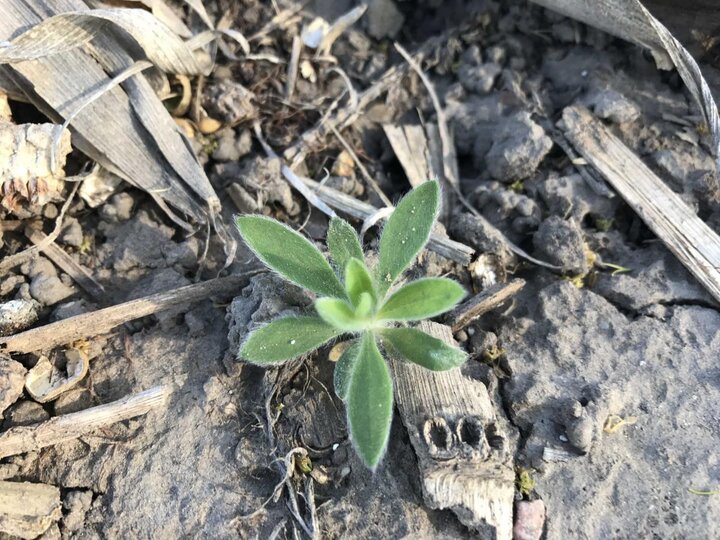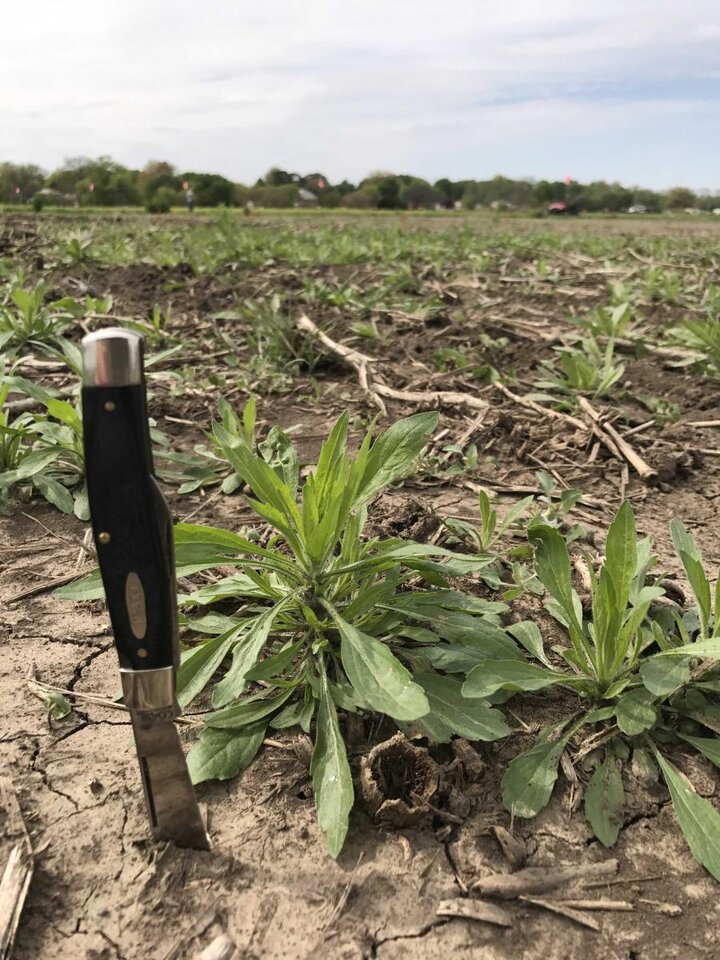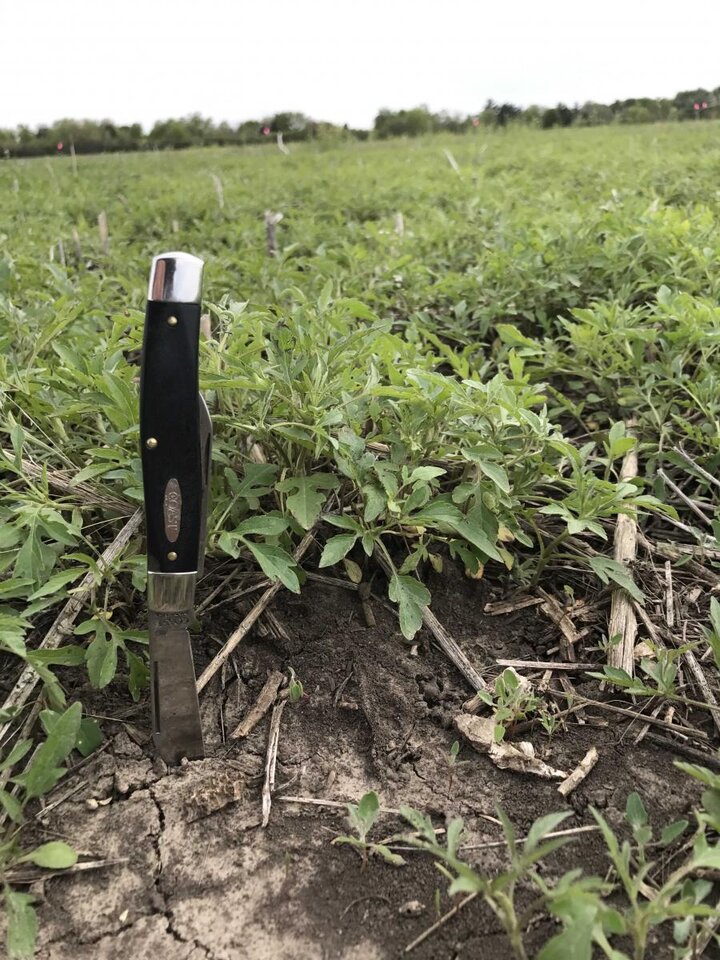In an earlier CropWatch article, five key times for managing troublesome herbicide-resistant weeds were highlighted. With spring weather upon us, if you have not done so, now is the time to apply burndown herbicides to control established winter annuals like marestail or early-emerging summer annual species like giant ragweed, common ragweed, and kochia.
One of the challenges with spring burndown application is timing. Wet and windy conditions can delay spraying and under these conditions weeds can grow significantly in a few days. Waiting until planting to spray troublesome weeds such as marestail may be too late to achieve adequate control. In addition, waiting until soybean planting limits the available herbicide options since there are relatively few labeled effective burndown chemicals for spraying at this time.
Early Spring Management
In an earlier article, the authors noted five key times to take action to manage herbicide resistance in soybeans. This article is the first of five articles addressing steps to take at these key times.
The following section identifies key treatment aspects to consider for early-season herbicide-resistant weeds in Nebraska.
Marestail
(Figure 1)
- Widespread across Nebraska.
- In Nebraska most marestail germinates in the fall.
- It is important to control marestail before it bolts; after bolting it becomes difficult to control and the available herbicide options in soybeans are less effective.
Giant and Common Ragweed
(Figure 2)
- Common to eastern Nebraska.
- Short germination window early in the spring and rapid growth early in the season.
- It is important to spray ragweeds when they are 2 to 4 inches tall
Kochia
(Figure 3)
- Common across western Nebraska.
- Short emergence window early in the season.
- Slow growth early in the spring, which provides a good window for effective burndown.
Herbicide Recommendations
- Synthetic auxins can be effective burndown tools; however, it is important to pay attention to soybean planting restrictions following application.
- 2,4-D ester is a better option than 2,4-d amine in the spring because the ester formulation is more effective and volatility is not a major concern with relatively low temperatures. Moreover, 2,4-D amine is more mobile and persistent in soil and thus has a longer planting restriction than 2,4-D ester.
- With 2,4-D ester the seven-day planting restriction for soybean is based on a 0.5 lb ae/acre (1 pt/acre of 6 lb ai/gal low-volatility ester) application rate and the 30-day planting restriction is based on a 1.0 lb ae/acre rate.
- Dicamba has slightly higher efficacy than 2,4-D on marestail and ragweed. It should not be used in the spring before conventional or Roundup Ready® soybeans; however, it is a good burndown option if planting XTEND soybeans.
- Contact herbicides such as Liberty, Gramoxone, or Sharpen can be effective burndown tools and may be faster acting than the synthetic auxins.
- Whenever applying contact herbicides, sprayer set-up for good coverage is important:
- Pay attention to label-recommended spray droplet size.
- Use higher application rates (at least 15 GPA).
- Don’t apply under windy conditions as smaller particle sizes are prone to drift.
- Pay attention to label-recommended spray droplet size.
- Use higher application rates (at least 15 GPA).
- Don’t apply under windy conditions as smaller particle sizes are prone to drift.





If burndown occurs within about two weeks of planting, it may be beneficial to include a residual herbicide as part of the tank mix. For difficult to control in-season weeds such as common waterhemp and Palmer amaranth in soybean cropping systems, residual herbicides are critical. Applying a residual at planting will give the longest in-season control; however, combining burndown and residual applications could allow for one less application.

